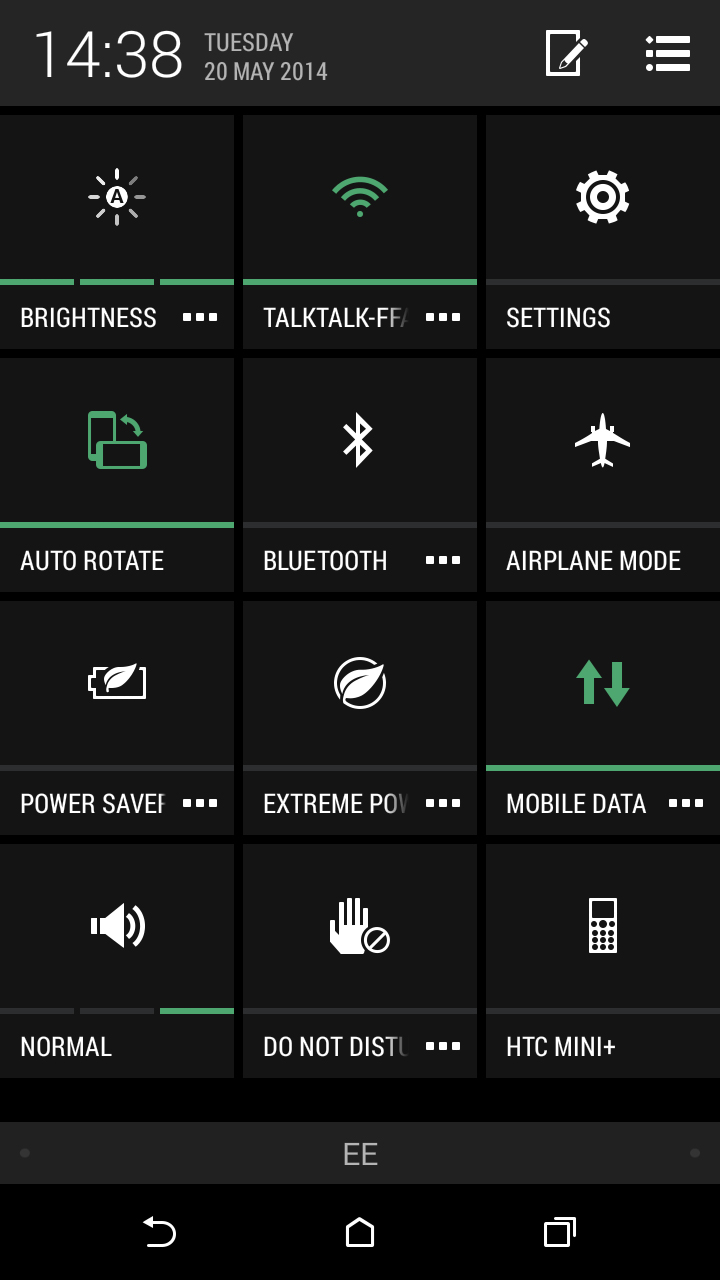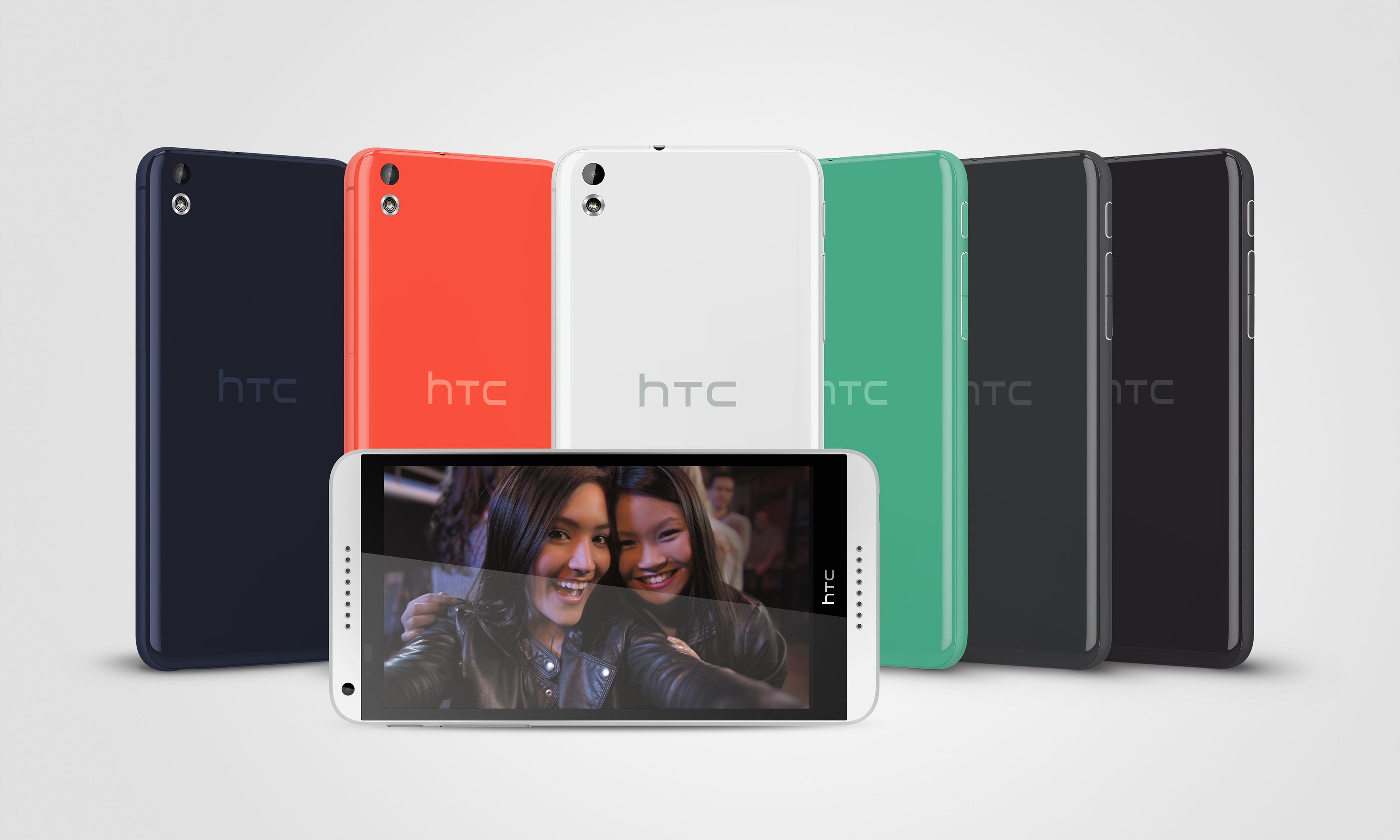Why you can trust TechRadar
HTC's Sense 6 user interface sits on top of Android 4.4.2 KitKat. As I touched on in the last section, it doesn't really feel like Sense adds much.
The aesthetic HTC has chosen is clean and stark. It's very easy to get to grips with, but compare it with stock Android and it's difficult to point out the advantages.

The notifications shade is good, pull down with one finger and it just displays all your incoming messages and updates by default. Pull down with two fingers and you get taken into quick settings instead, if you can remember to do that, otherwise it's an extra tap to reach a tile based menu that looks an awful lot like stock Android.
With a 1.6 GHz quad-core Qualcomm Snapdragon 400 processor, an Adreno 305 GPU, and 1.5GB of RAM it wasn't clear how snappy the HTC Desire 816 would be. As it turns out this is a speedy little number, which has no trouble navigating without lag.
When I ran a Geekbench test, the HTC Desire 816 scored 1463. For comparison the One M8 scored an impressive 2899, but a fairer comparison would be the Moto X, which scored 1281.
We know Google has been working on making Android smoother on lesser hardware and if the HTC Desire 816 is anything to go by then it looks like mission accomplished.
HTC has obviously also done some work on lightening the UI load because Sense 6 doesn't seem to have any negative impact either.
Sign up for breaking news, reviews, opinion, top tech deals, and more.
The HTC Desire 816 only has 8GB of storage, which isn't much, but let's not forget that it does have a microSD card slot which can boost that up to a maximum of 128GB. I was also pleasantly surprised to find around 7GB free out of the box.
Battery life
The HTC Desire 816 is big, but the battery isn't. It's rated at 2600mAh and it can't be removed, so there's no option to carry a spare. If you're using it a lot then that big screen is going to suck down the juice pretty fast.

Playing Asphalt 8 for ten minutes with the volume and brightness cranked up ate 5% of the battery life and the phone got pretty hot.
Streaming HD video from the Play Movies & TV app I found that the battery had dropped another 5% in ten minutes.
In the looped 90 minute video battery test on full brightness the HTC Desire 816 dropped to 75%. That compares to 92% for the Nokia Lumia 1320 and 83% for the Moto X.
Where it is strong is the standby and basic functions. With light use this phone will easily last you 24 hours between charges, especially if you allow the power saving mode to kick in when the battery gets low.
Extreme power saving mode throttles just about everything when the battery hits a certain percentage, or you can opt for Power saver and dictate where you'd like to save power.
You are losing functionality and performance to save juice, but it's a handy option to have in a pinch.
The essentials
The signal strength on the HTC Desire 816 is decent. On my old Galaxy S3 I struggled to get a signal in certain rooms in my house, but this phone was usually able to snag at least a couple of bars.
Comparing it side by side with the Sony Xperia Z2, however, the Desire 816 definitely trailed a little and couldn't match the strength of signal in the same location.
The sound quality is very good; callers were clear and loud and reported no problems hearing me.

The messaging app is solid with sensible predictive options to shortcut your typing. Feedback is good and it was generally accurate, even when I typed fast without paying a great deal of attention.
There is an option in the settings to turn on swiping, which they've called trace keyboard, but if you're into the one-handed wonders of swiping to text then you'll probably already have Swype or SwiftKey.
I don't like the web browser on the HTC Desire 816. I spent a while wondering why I didn't like it because it's relatively fast, it has tab support, it's easy to request the desktop view, and it works well.
Turns out it's because I'm used to using Chrome, which has the added advantage of already playing host to all my bookmarks and knowing my recent browser history, which is something I didn't realize I would miss until I did.
For the sake of consistency HTC should do what Sony has done and just put Chrome in as the default (it's already pre-installed in the Google apps folder on the home screen).
